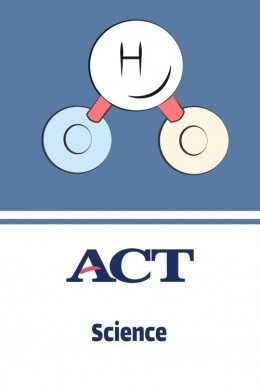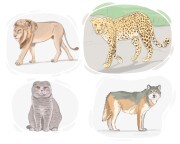Ilmu Pengetahuan ACT - Kehidupan Hewan dan Evolusi
Di sini Anda akan mempelajari beberapa kata dalam bahasa Inggris yang terkait dengan kehidupan hewan dan evolusi, seperti "endemik", "diurnal", "toksisitas", dll. yang akan membantu Anda lulus ujian ACT.
Tinjauan
Kartu flash
Ejaan
Kuis

an animal that primarily feeds on insects or other small invertebrates

insektivora, pemakan serangga
(of plants or animals) feeding on the meat or flesh of other animals

karnivora
(of an animal) solely feeding on plants

herbivora
an organism that cannot produce its own food and must obtain energy by consuming other organisms or organic matter

heterotrof, organisme heterotrof
an organism that breaks down and feeds on dead organic matter, such as decaying plant and animal material

detritivor, organisme detritivor
relating to organisms that live on or inside other organisms, benefiting at the expense of their hosts

parasit, parasitik
(of an animal) generating and regulating their own body heat internally

endotermik, berdarah panas
the process of waking up or becoming active and alert, often influenced by environmental stimuli or internal biological rhythms

kebangkitan, aktivasi
(of some animals or plants) to spend the winter sleeping deeply

hibernasi, menghabiskan musim dingin dengan tidur
a toxic substance produced and secreted by certain animals, typically used for defense or hunting
the harmful effects or potential for harm caused by a substance to living organisms or the environment

toksisitas
the capacity or ability of an organism, often referring to its genetic potential, reproductive success, or influence within its environment

kekuatan, kemampuan
the place or area in which certain animals, birds, or plants naturally exist, lives, and grows

habitat, lingkungan alami
(of wild animals) hunting, killing, and feeding on other animals for survival
a community of living organisms together with their physical environment, interacting as a system

ekosistem, sistem ekologi
primarily active or occurring during the daytime

diurnal, aktif di siang hari
(of animals or organisms) primarily active during the night

nokturnal
(of an animal) active during the twilight hours of dawn and dusk

senja, aktif di senja
to bring up partially digested food from the stomach back into the mouth, often to feed young or as part of the digestive process

memuntahkan, mengeluarkan
the internal bony structure of an animal that gives it form and supports its weight

endoskeleton, kerangka dalam
the hard outer covering that supports the body of an animal, such as an arthropod

rangka luar, cangkang
(of an animal, plant, etc.) not having any living members, either due to natural causes, environmental changes, or human activity

punah, hilang
the process of bringing extinct species back to life through scientific methods

de-kepunahan, kebangkitan spesies
(of a wild animal) tamed and adapted to live with or to the benefit of humans

dijinakkan, diadaptasi
the protection of the natural environment and resources from wasteful human activities

konservasi, pelestarian
the scientific process of creating an identical or near-identical copy of a living organism, cell, or DNA sequence through asexual reproduction or genetic engineering techniques

kloning
related to evolution or the slow and gradual development of something

evolusioner
a taxonomic rank below species that represents a distinct population within a species, exhibiting consistent differences from other populations

subspesies, ras
characteristic of an early stage of human or animal evolution

primitif, kuno
(of an animal, plant, etc.) being at risk of extinction

terancam punah
found or restricted to a specific geographic region or habitat

endemik
an extinct large, elephant-like mammal with long, curved tusks and a body covered in hair, which lived during the Pleistocene epoch

mastodon, gajah purba
an extinct hominid species closely related to modern humans, characterized by a robust build and distinctive facial features, that lived in Europe and parts of Asia until approximately 40,000 years ago

Neanderthal, Manusia Neanderthal














